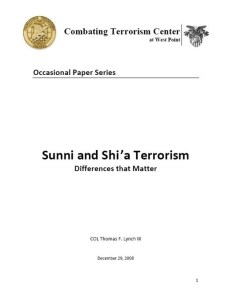
There are significant and little appreciated differences in the trajectory of Sunni extremist terrorism and that of Shi’a extremism. The differences exist across six key areas that impact American policy considerations, especially in light of steadily escalating tensions with Iran. First and foremost, Sunni radicals and Shi’a extremists differ in the overall approach and main objectives for their use of terror. Second, Sunni terrorists and Shi’a extremists manifest different patterns for recruiting terrorist operatives and developing terrorist missions. Third, despite holding a minority viewpoint within the wider Sunni Islamic community, Sunni extremists, especially Salafi-Jihadis, rely more extensively on the support of their coreligionist expatriate communities in facilitating terrorist activities. Fourth, while employing similar tactics and methods, Shi’a terrorist groups have shown a much greater propensity to kidnap innocents to barter, while Sunni extremists more frequently abduct to kill. Fifth, Shi’a terror groups exhibit a much higher incidence of targeted assassinations for specific political gain, rather than the high-casualty killings featured in Sunni terrorism, and particularly of the Salafi-Jihadist variant. Finally, each sect’s extremists manage publicity and propaganda differently.
Importantly, this study does not argue or imply that violence perpetrated by Sunni or Shi’a extremist groups is carried out for reasons that are inherent to one or the other tradition of Islam. There is no evidence sought or identified in this work contending that historical patterns of terrorist attacks by organizations identifying themselves as Shi’a, for example, are pre-determined by Shi’a theology or philosophy. What this study does suggest, however, is that those Shi’a organizations that have conducted terrorism in non-combat zones display several preferred operational patterns that contrast markedly from their Sunni counterparts.
Even though additional research is warranted, a preliminary review of these six areas of differentiation suggests that the United States and its western allies should carefully and seriously consider the dissimilarities between Sunni and Shi’a terrorism.
 Skip to content
Skip to content
